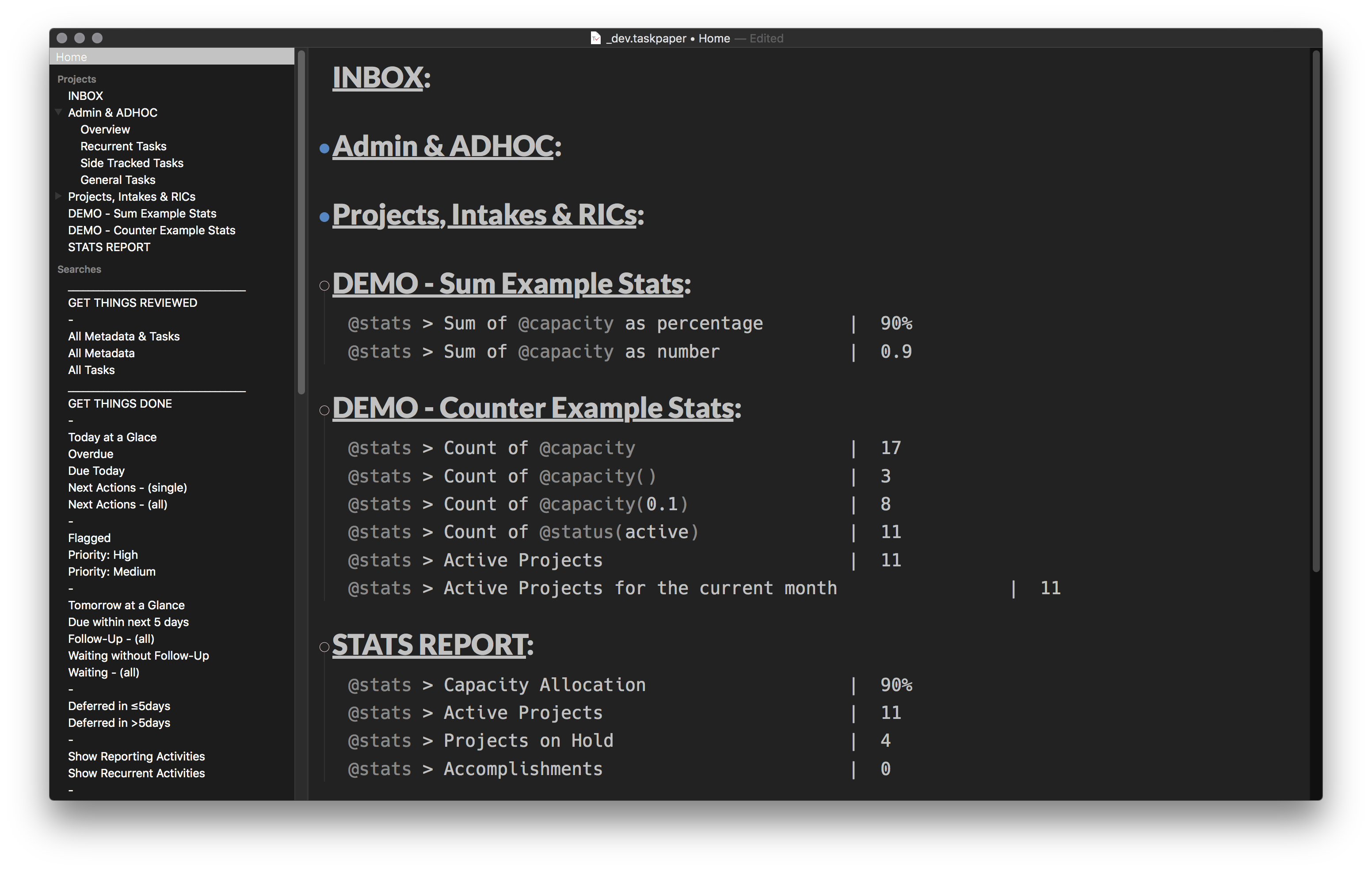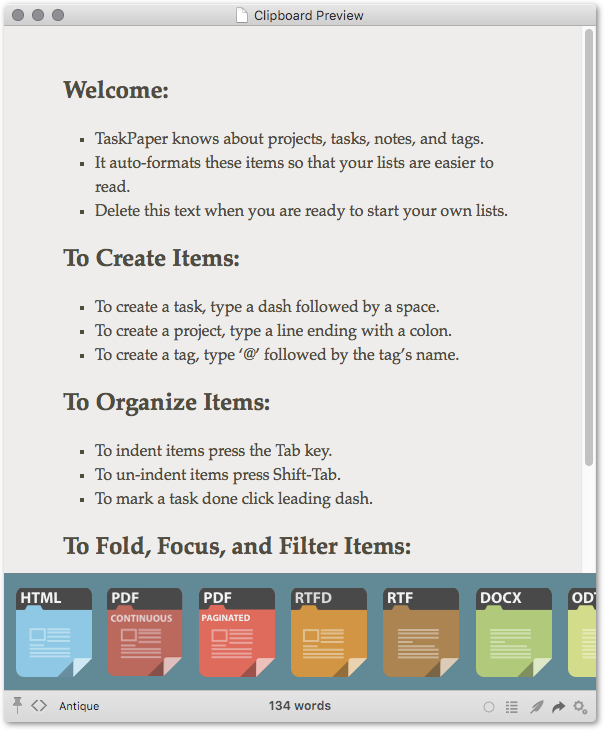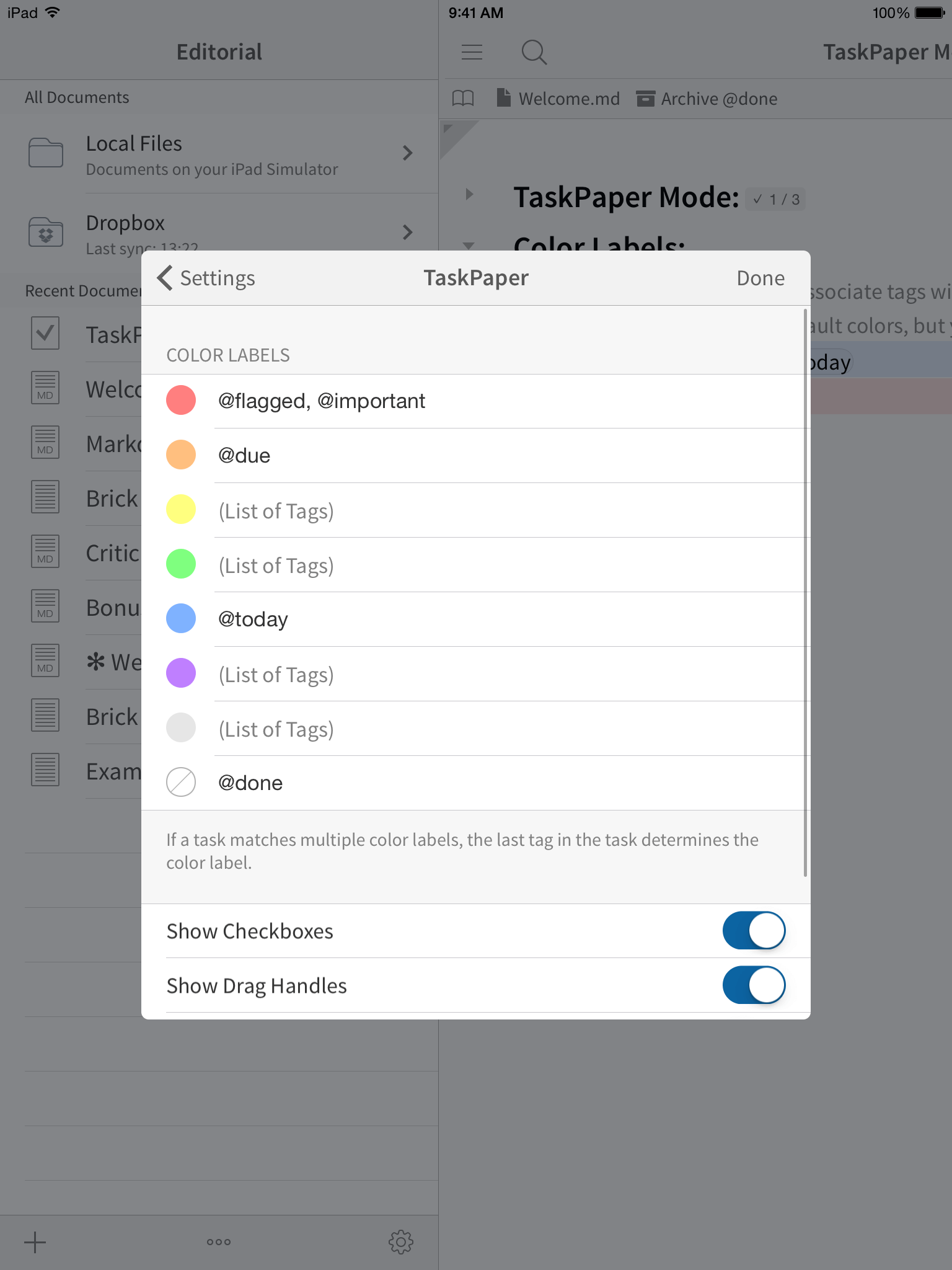

You can comment this if this is not required. In addition, the script also adds the tags used in the TaskPaper file as a ‘#+TAGS’ entry in the exported org-mode file. The script has a ‘ORG_USES_ODD_LEVELS’ global variable that can be set to true if this is the desired export format. In particular, the odd-levels versus the odd-even levels is interesting and useful. Note that Org-mode supports multiple prefix styles with ‘*’. Tags = md.split(/ +/).reject if tags # Keep a list of all tagsĮlsif line =~/:$/ #. Md = LINE_PATTERN.match(line) # Match and extract each line Shiftlvl = ORG_USES_ODD_LEVELS ? 2 : 1 # Determine the number of stars to use in Org-mode entries # Followed by a dash (the taskpaper task identifier) # Whether the generated org-mode file should use odd-level prefix stars # The output is on STDOUT, which can be redirected to an Org-mode file. # Usage: From the command line, enter the command: # Converts Taskpaper files to Emacs org-mode files. Without further ado, the script to convert from TaskPaper to Org-mode is: This (for me) provides best of both worlds – quick and ubiquitous data capture, and the power and flexibility of Org-Mode.

Use a script to collect the TaskPaper entries and reformat them into a Org-Mode compatible file.I make heavy use of the quick entry window here Use TaskPaper as an initial capture mechanism (sort of as a pre-Inbox store).My usage has now become more of the following: TaskPaper on the other hand launches in under a second, and also offers a nice quick entry form that is available system-wide via a a global short-cut key.Įmacs aficionados will protest now – after all – Emacs is meant to be launched and never shutdown! This is true, but in my usage patterns, Emacs does get closed once in a while and having to launch it just to make a few quick Org-Mode entries (even with the excellent remember mode) becomes a pain. However, there is one big difference that has led me to looking at integration: Org-Mode is Emacs based and hence takes ages to launch. Org-Mode is obviously much more feature rich than TaskPaper, which by design keeps things simple. The underlying files are plain text with the meaning readable even when not viewed by the appropriate software. So where does the link between TaskPaper and Org-Mode come in? Both are text based, and have their own light-weight formats to define outlines and tasks.
#TASKPAPER THEMES SOFTWARE#
In fact Org-Mode has become one of the primary software that I use regularly, every day. I have been a heavy user of Emacs’ Org-Mode for some years now, and love the power and flexibility it offers for tracking not just outlines and tasks, but any text based item, including notes and calendar entries. It also provides a quick launch time and a nice system-wide quick entry window that is accessible with a single shortcut key.

#TASKPAPER THEMES MAC#
It combines the simplicity of a text micro-format to mark the tasks, and the elegance of a Mac UI. TaskPaper is a simple and elegant task management software for the OSX platform.


 0 kommentar(er)
0 kommentar(er)
